As you launch into the new year, it's crucial to identify new ways to adapt to emerging industry changes, embrace creativity, and enhance communication for the months head. This edition of Business in Action is crafted to support your growth in 2025 with tips for building customer loyalty, fresh takes on enhancing team motivation, a guide to mapping out your customer interactions, and expert advice for navigating challenges from a top executive.
As you look to strengthen your client base, explore the strategies inside for turning one-time buyers into dedicated advocates. By deepening your customer connections and encouraging ongoing engagement, you can better ensure that they return time and again, in turn fortifying your long-term revenue growth.
An engaged team is at the heart of every thriving organization, but their motivation may be waning amid the postholiday blues. The enclosed article goes into practical methods for boosting employee enthusiasm, providing ways to foster a supportive environment that energizes your workforce and increases their productivity.
One of the most effective tools for marketing is the customer journey, a six-stage blueprint of how individuals engage with your brand. Discover how to map yours to create a comprehensive plan that enhances every touchpoint, streamlining the client experience and driving more meaningful interactions.
Get a dose of inspiration by reading about Shellye Archambeau’s remarkable journey to becoming one of the first female African American CEOs in Silicon Valley. Her insights and experiences offer valuable lessons on navigating challenges and achieving leadership success in a competitive landscape.
Here’s to a productive start to the year and a lucrative 2025. As always, it’s a pleasure to send you this magazine.
From the hundreds of ads out there touting major deals for new customers, it’s clear that many companies prioritize getting fresh business seemingly above all else. But as someone with more than two decades of experience both acquiring and keeping clients, I can tell you that the true gold mine lies in retention. Returning customers cost less to acquire, offer a more consistent source of revenue, and oftentimes even serve as active brand champions. In fact, according to Fred Reichheld of Bain & Company, just a 5 percent increase in retention rates could result in an amazing 25 to 95 percent increase in earnings.
Clearly, giving repeat business top importance can help you greatly increase profitability and attain steady growth. While the best strategies for you may depend on your company or industry, here are a few core ones to consider that may enable you to boost your number of devoted clients and foster explosive expansion.

The client relationship is crucial to creating loyal patrons. People are far more likely to return to a company when they feel connected to it, and that requires you to look at them as more than just a sale, taking steps such as the following to demonstrate genuine care and build trust in your brand.
Communicate, communicate, communicate
Strengthening any type of long-term relationship demands constant, open, and efficient communication. As a business, you can achieve this through a multichannel strategy that features a calculated mix of emails, social media, direct mail, and other modes of contact. Keep your content diverse as well; rather than barrage your customers with endless promotional materials, offer educational guides on topics relevant to them or glimpses behind the scenes to endear them to your brand. Such frequency and variety will keep them informed and involved, ensuring that you stay top of mind. This way, you’ll be the first company they think of when they’re in need of another product or service you offer.
Listen to your consumers
Going hand in hand with communication is listening to your customers. Read through reviews or send out surveys via email or social media to help identify where you are succeeding—and where you could stand to make improvements. Then make sure to respond promptly to any issues you identify to show that you’re listening. For instance, comment back to customers who share negative experiences on social media to acknowledge their frustrations and offer to make it right, which can help appease them as well as show ownership as a company. Or if you have enhanced a product based on customer feedback, let them know through an email blast, emphasizing your gratitude for their ideas. By taking such actionable steps, you can make your customers feel heard, boosting their trust and encouraging them to return.
Personalize the experience
Another essential element of building the client relationship is personalization. Customizing your communications to fit individual tastes produces a more relevant consumer experience, helping them feel more valued and cared for beyond the sale. Simply gather relevant data on your typical customer—age, location, pain points, etc.—and determine ways to apply it, such as by tailoring your content to their interests and creating segmented email campaigns targeting pockets of your audience.

Loyalty programs foster repeat business by creating a sense of belonging and making customers feel special. Tiered rewards, special benefits, and custom offers are all enticing perks that may encourage one-time buyers to come back in order to take advantage of them. In fact, over 75 percent of global shoppers would even switch brands for a better rewards program, according to a KPMG survey. So if you don’t already have one, consider adding it to your business strategy—ultimately, it’ll be a win-win situation for both you and the customer.

Your employees are the ones on the front line with customers, making them the key to delivering great service that keeps customers coming back for more. So don’t hold back when it comes to uplifting the team around you! To start, focus on building a strong, supportive culture that promotes open communication and puts a customer-centric emphasis at the forefront. You should also conduct regular training sessions to refresh or update employees on product knowledge, best customer service practices, and problem-solving techniques. You could even offer opportunities for more extensive professional development to boost their sense of empowerment. The more knowledgeable, competent, and confident your staff is, the more able they’ll be to provide positive shopping experiences that increase retention.

When it comes to implementing the strategies above, technology can be a powerful tool to help you simplify processes, improve experiences, and make data-driven decisions. A CRM, for instance, offers a consolidated center for handling essential customer data, while marketing automation features can help ensure that you don’t miss crucial touchpoints. And social media analytics enable detailed tracking of your customers’ habits and engagement with your brand. By using a mix of these technologies, you can maximize your marketing initiatives to create long-term loyalty.
Remember, the path toward retention is a marathon rather than a sprint. Success demands constant effort and a positive attitude, so keep your mind churning and your chin up toward a road of repeat customers ahead.
 ABOUT THE AUTHOR: Luke Acree is an authority on leadership, a lead-generation specialist, and a referral expert who has helped more than 100,000 entrepreneurs and small businesses grow their companies. He hosts Stay Paid, a sales and marketing podcast, and has been featured in Entrepreneur, Forbes, and Foundr.com.
ABOUT THE AUTHOR: Luke Acree is an authority on leadership, a lead-generation specialist, and a referral expert who has helped more than 100,000 entrepreneurs and small businesses grow their companies. He hosts Stay Paid, a sales and marketing podcast, and has been featured in Entrepreneur, Forbes, and Foundr.com.
TAKE ACTION:
Review your current customer feedback channels to identify recurring themes, both positive and negative, and then brainstorm initiatives you can take to either double down on or address them.
The new year presents golden opportunities to reassess your business strategies, generating innovative ideas to foster greater growth and establishing a game plan for making it happen. However, your organization’s ability to reach new heights hinges on one key factor—the efforts of the people you have working for you. And especially after the holidays, it may not always be easy for them to maintain their engagement and enthusiasm for their projects and the bigger mission. To help prevent a drop in productivity in the months ahead, consider implementing these strategies for revitalizing your team.

The environment around your team can have a profound impact on their satisfaction and energy levels, so strive to create a positive and stimulating workplace. Start by investing in furniture designed to help increase performance. For instance, ensure that each chair is comfortable and supportive to reduce the physical strain that comes with sitting for eight or more hours, and supply desks or workstations that provide adequate space and storage to facilitate a smooth workday. You could also consider introducing softer lighting and potted plants for a more calming ambience.
Beyond the physical space, culture plays a significant role in your company’s environment; when employees feel as if they aren’t being respected or valued, can’t openly speak up or share ideas, or are surrounded by negativity, they are more likely to grow disengaged. A key to avoiding such experiences is maintaining strong communication and collaboration between team members and departments. This can include sending out a regular newsletter with updates on the business, holding monthly company-wide meeting to disperse information and offer encouragement, and creating opportunities for different departments to interact with one another. By prioritizing these aspects, each person has the chance to better connect with both your company and their coworkers, leading to a more open and inspired workplace culture.

As part of the above, you should also regularly seek employee feedback. Either quarterly or biannually, send out questions related to work-life balance, job satisfaction, what your business is doing well, and what may need to change. And keep the surveys anonymous to encourage more honest responses. Once you’ve had the chance to review them all, demonstrate that you value your employees’ input by communicating the findings and detailing the specific measures you plan to take to promptly address any common pain points. In doing so, you can soothe frustrations that may lead to a lack of work enthusiasm and build trust in your leadership to inspire greater commitment.

Recognition continuously remains a powerful motivator that can help your team members feel like their efforts are valued. Though most people don’t expect to receive daily praise for simply doing their job, there’s much to be said for acknowledging someone’s continuous hard work and outstanding accomplishments. If you don’t already, start highlighting individual achievements during company-wide meetings and personally thanking employees for their continued contributions to your business’s success. You could also offer incentives for high performance or encourage peer recognition through your company’s communication platforms or on social media. Each of these ventures can go a long way toward ensuring that your team feels appreciated, in turn keeping them engaged with your mission and striving to do more.

Employees who are overwhelmed or overworked are more likely to experience burnout, leading them to become disconnected in the workplace. Recognition can do a lot to help offset this, but a deeper-level solution is establishing policies that support a healthy work-life balance. As feasible, consider offering flexible work hours, the option to work fully or partially remote, or shorter workweeks, such as ones with half-day Fridays. This adaptability shows your understanding that team members have responsibilities outside the workplace and gives them greater ability to care for both themselves and their families.
Similarly, encourage employees to take regular breaks away from their desks as well as use their vacation time. The former will allow them to clear their heads throughout the day, while the latter can help them get a complete reset. In either case, they can return to work feeling rejuvenated and ready to jump headfirst into achieving your company’s upcoming initiatives.

Continuous learning and development opportunities are vital for employee engagement. They not only demonstrate that your company is committed to helping each person succeed in their current position but also show a path for advancement in the future. There are many different ways to go about this. You can offer courses, workshops, and seminars during business hours that are related to employees’ careers and professional goals or create a mentorship program to provide them with additional guidance and support. You could even simply give those interested the chance to learn about the different roles and responsibilities within the company, which may help them better understand the function of their current position or see new ones they want to work toward.
When it comes to improving employee engagement, it’s essential to be proactive and always keep the experience of the individual in mind. By investing in your team and ensuring that they feel valued and part of something bigger than themselves, you can create a more committed and loyal workforce that leads your organization to greater success in 2025.
TAKE ACTION:
Implement these strategies in your organization, and track your team’s progress toward greater efficiency.
To rise to the top of a highly competitive market, you need to perfect your lead-generation strategies. And whichever you prefer, they should all involve one remarkable tool: the customer journey. This road map encompasses the entire experience that the public at large, prospects, and current clients have with your brand—from initial awareness to the final purchase and beyond. By crafting your own version according to the unique intricacies and challenges of your organization, you can effectively find, nurture, and convert leads into loyal consumers who go on to refer your business.

The first step is to understand the general levels of the customer journey. Though you’ll want to fine-tune yours based on the products or services you offer and whether you sell B2B or B2C, the following generic framework will help give you a baseline of where to begin. (To fill out or revise your customer journey, download the printable at the bottom of this page.)
Naturally, any business would hope to guide prospects from the initial stage to the final one, but, of course, that doesn’t always happen. While you can’t control every individual, you can adjust your practices to enhance the customer journey, boosting your ability to transform noncustomers into dedicated clients and even referral machines for your organization.

Once you map your journey, utilize the categories to strategize specific lead-generation efforts. Here are a few top tactics that may enable you to capture and nurture prospects more effectively.
Catalog key touchpoints
Every touchpoint with a client is an opportunity to convert them and cement their loyalty. List the ones that occur at each stage, identifying which prove to be most effective and which you may need to tweak for better results.
For example, a lawn-care service may send follow-up emails to its clients indicating that they’re due for service (with the intention of guiding them from the onboarding stage to engagement). Its marketing analytics, however, may show that these emails have a poor open rate, meaning they are ultimately ineffective. To improve this, the company could tweak its subject lines to be more engaging and move the delivery times from morning to evening. These adjustments may better entice customers to read the emails and, in turn, schedule repeat services.
Likewise, review the common touchpoints in your organization, including phone calls and in-person sales, to identify the challenges of each. Then brainstorm ways to make your content, sales verbiage, timing, and other aspects more impactful, enhancing their ability to move customers down the funnel.
Leverage data
Breaking down your customer journey can also better equip you to shape your marketing strategies at every stage. Take the first phase: awareness. Using your map, you can identify all the different ways prospects could possibly learn about and begin interacting with your brand. Then review various metrics, such as your post rates and click-through rates on social media sites, to gauge which currently garner the most engagement. You can obtain this information in other stages as well, such as by asking customers “How did you hear about us?” when onboarding them. Once you have this data, funnel your lead-generation efforts and marketing budget toward the most effective channels—or even toward enhancing the weaker ones.
Additionally, you can gather details about how existing customers stay engaged with your company postpurchase. For example, collect feedback from onboarded consumers about shortcomings in your customer service or products to discover how to improve stages three and four. Afterward, reach out to these clients again with “We heard you out!” messaging to help move them into the engagement or even advocacy phase. Continue to collect major metrics like these, and you may find myriad opportunities to strengthen the client journey and polish your marketing efforts.
Tailor your messaging
Customers these days gravitate toward businesses that offer a personalized experience, making it essential to customize your marketing efforts based on where they are in the journey. While those in the consideration stage may enjoy reading informative blog posts and consumer reviews, clients in onboarding might prefer to receive ongoing support emails featuring helpful user tips or links to landing pages that suggest related products. As for email marketing, you can segment messages into follow-up, ongoing customer support, news about upcoming sales, and more. Tailoring your language in this way will help you better communicate with prospects according to their unique needs, helping you push them forward in the customer journey and make it a smooth ride from start to finish.
TAKE ACTION:
Download the printable via the button below, and use it as a template for crafting winning lead-conversion techniques.
Trailblazing executive Shellye Archambeau’s extensive career has taken her from the lower rungs of IBM to a Fortune 500 board member and more, with many impressive stops along the way. Here she shares her inspiring journey, leadership insights, and practical advice for overcoming challenges and achieving ambitious goals.
Tell us about your career journey:
Growing up, I was more interested in science and technology than in traditional girl stuff, fostering a rebellious spirit that has served me well throughout my career. After graduating from college with a degree in computer science, I started my career at IBM. I quickly realized that I wanted to be more than just a cog in the machine—I wanted to be a leader. I worked hard to prove myself, and I was eventually given the opportunity to lead a team. From there, I just kept climbing the corporate ladder, holding executive positions at some of the most prestigious companies in the tech industry.
Then in 2003, I made history when I became one of the first African American women to become CEO of a publicly traded technology company, leading the merger between a small start-up and global software-solutions company MetricStream and taking over from there. It was a huge accomplishment, one I’m immensely proud of.
I stayed in the position until 2018 before moving on to other endeavors. Today, I’m a successful entrepreneur and investor and serve on the board of several companies, including Verizon, Roper Technologies, Okta, and Lineage. I’m also a passionate advocate for diversity and inclusion in the tech industry, which is why I began Ignite Ambition. It’s a nonprofit that helps early and middle management professionals go after their biggest career goals. I believe that everyone, regardless of their background, should have the opportunity to succeed.
Such a trajectory requires a lot of grit. What early experiences shaped your ambition and work ethic?
I learned early in life that the odds were stacked against me. My family moved frequently, and I lived in seven different states before starting high school. I was often the sole Black student in my classes, sometimes the only one in my grade, and occasionally one of only a few in the entire school. This led to bullying and feelings of isolation. However, these experiences instilled in me a strong desire for acceptance and respect. I discovered that treating others with kindness increased my chances of being liked and respected in return.
My mother had a huge influence on me during this time as well. When I expressed frustration to her about my circumstances, she stressed the importance of resilience and determination. She taught me that life isn’t fair and that I needed to develop strategies to overcome obstacles, encouraging me to focus on my goals rather than dwelling on unfair treatment.
She also imparted valuable wisdom about managing my own responses: I couldn’t control the actions or words of others, but I could control how I reacted. Allowing others to dictate my emotions or actions would only give them power over me.
Your book, Unapologetically Ambitious, is a powerful call to action. When in your career did you have to employ unapologetic ambition?
I started my career at IBM, but even then I had a clear aspiration to become a CEO. Research indicated that many CEOs possessed international experience, particularly in Japan, so I proactively expressed my interest in working there to several individuals within the company. This strategic approach eventually led to an opportunity to relocate to Japan, a pivotal step in my career progression. This experience highlighted the importance of clearly articulating your goals and taking the initiative to pursue them.
What did you learn about the keys to leading an organization to success from your time at MetricStream?
Building and developing a strong team is fundamental, as is creating a shared vision and fostering a positive company culture. On a more micro level, you also need to set clear expectations, encourage open communication, empower employees, recognize achievements, learn from setbacks, and demonstrate genuine care for team members.
Work-life balance is a constant struggle for entrepreneurs. How do you delegate your own time?
I prefer the term “work-life integration” to “work-life balance” as it more accurately reflects the interconnectedness of different life areas. You must recognize that it’s impossible to excel in every one simultaneously. Rather, the key is to utilize effective time management in each aspect, including work, family, and personal well-being, prioritizing as needed. Delegating tasks and learning to say no are crucial skills for achieving a healthy work-life integration.
What advice would you give to a business leader who’s facing obstacles like bias or self-doubt?
Regarding the first, one of the most effective strategies I’ve employed is seeking advice and assistance; doing so is a sign of strength, not weakness. I’ve found that most people are willing to help if approached respectfully. For instance, in a meeting where my ideas were consistently overlooked, I sought the support of a colleague. By asking him to reinforce my points, I was able to gain more traction and visibility.
As for addressing self-doubt, that requires self-reflection and action. Begin by identifying the specific fears that are hindering your progress; writing them down can help to clarify and reduce their impact. Then develop strategies to mitigate them. Consider the potential consequences of inaction, and weigh them against the potential rewards of taking risks. And don’t hesitate to seek advice from mentors or trusted colleagues for this obstacle as well—they can offer support and guidance to help you move forward.
For more info, visit shellye.com







